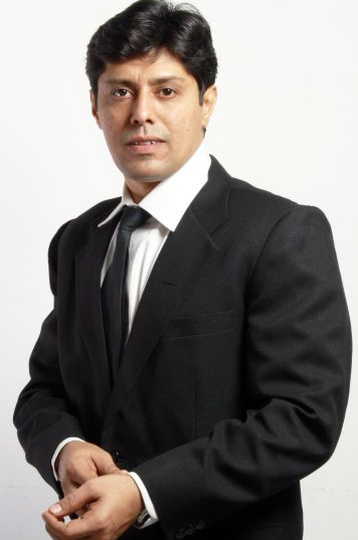
Patent attorney in India
I, Mahesh Bhagnari, am the Managing Principal of the firm:
- I am an Attorney at Law with Bar Council Registration № MAH/1574/2003.
- I am licensed to practice at the Intellectual Property Office as a Patent attorney in India and Design attorney in India with Registration № IN PA 1108.
- I am licensed to practice as a Trademark attorney in India with Registration № 10742.
- I have more than twenty years of professional experience working in the field of Intellectual property.

A patent in India gives you exclusive rights over your invention, allowing you to make, use, sell, or license it for profit. It’s a type of legal protection that ensures no one else can commercially exploit your invention without your permission.
To get a patent in India, your invention needs to be new, involve an inventive step, and be useful in an industry. Essentially, it should offer a fresh way of doing something or solve a technical problem in a new way.
Once granted, a patent in India is valid for 20 years. Like any other form of property, a patent can be sold, licensed, inherited, or even abandoned. It’s considered an intellectual property right, so you have a lot of control over how it’s used or transferred.
If you’re looking to file a patent application in India for an invention, it can be done by any of the following people, either on their own or together with someone else:
- The true and first inventor
- The assignee of the true and first inventor
- The legal representative of a deceased true and first inventor or their assignee
When you’re ready to file a patent application in India, here’s what you’ll need:
- The name, address, and nationality of each inventor and applicant.
- A copy of the Complete Specification, which should include claims, an abstract, and any relevant drawings.
- A verified English translation of the priority documents.
- A Power of Attorney signed by the applicant or an authorized person for each applicant.
- Proof of Right, which is a document that transfers the rights from the inventor to the applicants.
- Information about the status of any patent applications filed in other countries for the same invention.
Attorney fee for Patent in India
Action based fee
- Attorney fee for preparing and filing an application for a Patent in India
- Additional fee for responding to office actions
- Additional fee for preparing evidences and arguments
- Additional fee for attending hearings with the examiner
Capped Flat fee
- Attorney fee for preparing and filing an application for a Patent in India
- No further fee for responding to office actions
- No further fee for preparing evidences and arguments
- No further fee for attending hearings with the examiner
The official fee for filing a Patent in India
| Action Particulars – in US$ | Individual | Large Firm |
| Filing application for Patent | 30 | 130 |
| For each additional priority | 30 | 130 |
| Each additional page over 30 | 03 | 14 |
| Each additional claim over 10 | 06 | 28 |
| Filing request for examination | 70 | 300 |
To get a patent in India, your invention needs to meet a few key criteria. First, it should be practical and useful. It must also have something new about it—some feature that hasn’t been seen before in its technical field. This existing body of knowledge is known as “prior art.”
Your invention should also involve an inventive step, meaning it shouldn’t be something that a person with average knowledge in the field could easily figure out. Finally, the invention must be considered “patentable” under Indian law.
There are some things that typically can’t be patented, like scientific theories, mathematical methods, plant or animal varieties, discoveries of natural substances, or methods for medical treatment (though medical products can be patented). Just because you have a patent doesn’t automatically mean you can use or sell your invention—other laws, like health and safety regulations, might still apply.
Under the Patents Act, 1970, there are certain inventions that can’t be patented. These include:
- Anything frivolous or against natural laws.
- Inventions that go against public order, morality, or are harmful to life or the environment.
- Discoveries of scientific principles or substances that exist naturally.
- New uses for known substances or processes that don’t result in a new product.
- Combinations of known substances that only result in the sum of their properties.
- Mere rearrangements or duplications of known devices.
- Methods of agriculture or horticulture.
- Medical treatments or procedures for humans or animals.
- Plants, animals, seeds, and biological processes.
- Mathematical methods, business methods, computer programs, or algorithms.
- Artistic creations, like literature, music, or films.
- Schemes, rules, or methods for performing mental acts or playing games.
- Presentations of information.
- Topographies of integrated circuits.
- Anything related to atomic energy.
Having a patent means others can’t commercially make, use, or sell your invention without your permission. If someone does infringe on your patent, you can enforce your rights in court. On the flip side, someone can challenge your patent in court, which could result in it being declared invalid.
As a patent owner, you have control over who can use your invention while it’s protected. You can license it to others or even sell your rights to someone else. Once the patent expires, typically after 20 years, your invention enters the public domain, meaning anyone can use it without needing your permission.
Patents encourage innovation by giving inventors recognition and an economic monopoly over their creations for a limited time. This protection drives continuous improvements in the quality of life.
The first step to securing a patent is applying for one. The application should clearly describe the invention, including its technical field, background, and details so that someone skilled in the field could replicate it. This description is usually supported by drawings, plans, or diagrams.
The application also includes “claims,” which outline the extent of the protection you’re seeking. The Patent Office will closely examine your application to ensure it doesn’t overlap with any prior art and that your claims are supported by the description. You’ll need to address any objections from the Patent Office to get your patent approved.
In India, patents are granted by the Intellectual Property Office of India. In other regions, like Europe or Africa, regional offices handle patent applications for multiple countries. The Patent Cooperation Treaty (PCT) allows you to file a single international patent application that’s effective in multiple countries, but each country still decides whether to grant the patent.
There’s no such thing as a “world patent.” You need to file in each country where you want protection, or in some cases, a regional office can handle it for you. The requirements and fees vary by country, so it’s a good idea to consult with an intellectual property lawyer.
It’s crucial to file your patent application before publicly disclosing your invention. If you disclose it first, it might be considered “prior art,” making it difficult or impossible to patent. Some countries offer a grace period, but this varies, so it’s important to understand the rules in the places where you seek protection.
If you must disclose your invention before filing—like to an investor—make sure to use a confidentiality agreement to protect your rights.
Written by Mahesh Bhagnari, Patent & Trademark Attorney in India.
Contact Us
You can get in touch with us on address, emails and phone numbers given here.
Phone: +91.9860588440
email: info@bhagnari.com
You may make a phone call between 11:00 am and 11:00 pm India time.
Send all post and documents to the ULHASNAGAR office.
+91.9860588440
Call us now
info@bhagnari.com
Send us an email
